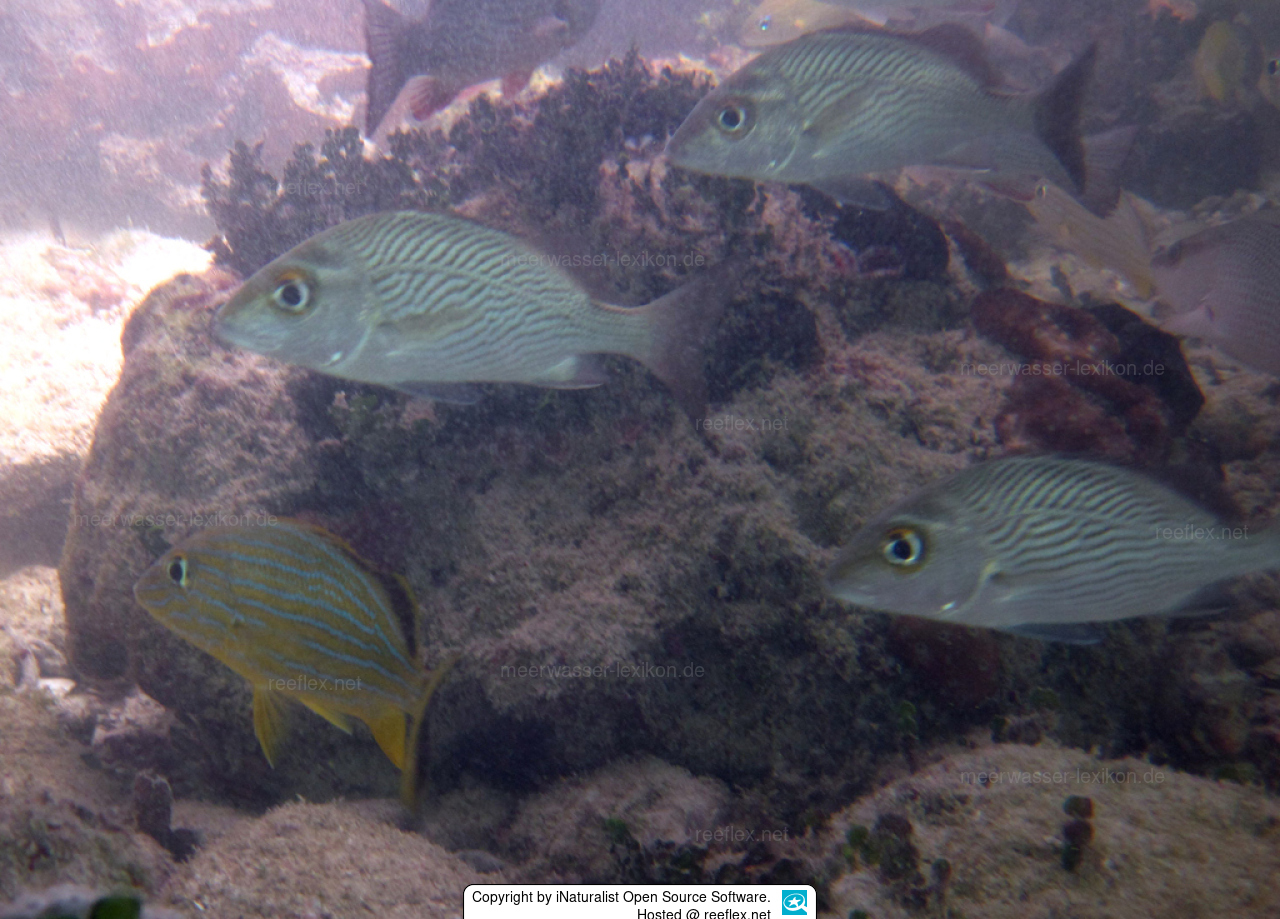Info
Haemulon bonariense occurs in the sea over soft bottoms and shallow hard bottoms.
Adults:
The head and body of the grunt are silvery, with narrow, wavy, oblique, dark lines along the scale rows on the body.
The pectoral fins of the fish are transparent, the other fins are dark to dark brown.
A black spot can be seen under the lower corner of the preopercle.
Juveniles: In juveniles two long stripes and a short stripe above the eye are clearly visible.
A black spot with a broad anterior margin is visible on the base of the caudal fin.
$fish poisoning
Synonym: Haemulon bonaeriense Cuvier, 1830
Adults:
The head and body of the grunt are silvery, with narrow, wavy, oblique, dark lines along the scale rows on the body.
The pectoral fins of the fish are transparent, the other fins are dark to dark brown.
A black spot can be seen under the lower corner of the preopercle.
Juveniles: In juveniles two long stripes and a short stripe above the eye are clearly visible.
A black spot with a broad anterior margin is visible on the base of the caudal fin.
$fish poisoning
Synonym: Haemulon bonaeriense Cuvier, 1830







 iNaturalist Open Source Software
iNaturalist Open Source Software



















